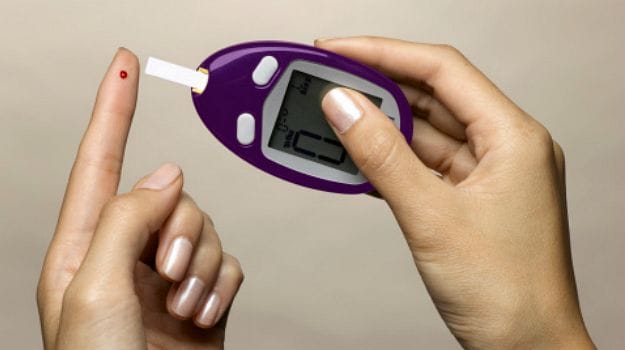A new technology developed by an Indian-origin scientist, which uses a laser device may be able to non-invasively monitor blood glucose levels and eliminate the need for daily finger pricking for diabetics.(World Diabetes Day: Can Your Diet Alone Reverse Diabetes?)Currently, many people with diabetes need to measure their blood glucose levels by pricking their fingers, squeezing drops of blood onto test strips, and processing the results with portable glucometers.
The new technology, developed by Professor Gin Jose and a team in the Faculty of Engineering at the University of Leeds, uses a small device with low-powered lasers to measure blood glucose levels without penetrating the skin.(6 Natural Remedies for Diabetes)It could give people a simpler, pain-free alternative to finger pricking. The technology has continuous monitoring capabilities making it ideal for development as a wearable device. This could help improve the lives of millions of people by enabling them to constantly monitor their glucose levels without the need for an implant. "Unlike the traditional method, this new non-invasive technology can constantly monitor blood glucose levels," Jose said."As well as being a replacement for finger-prick testing, this technology opens up the potential for people with diabetes to receive continuous readings, meaning they are instantly alerted when intervention is needed. This will allow people to self-regulate and minimise emergency hospital treatment," Jose said.(This is the Main Cause of Rise in Diabetes Cases)At the heart of the new technology is a piece of nano-engineered silica glass with ions that fluoresce in infrared light when a low power laser light hits them. When the glass is in contact with the users' skin, the extent of fluorescence signal varies in relation to the concentration of glucose in their blood.(Fasting Can Help Reduce Risk of Diabetes)The device measures the length of time the fluorescence lasts for and uses that to calculate the glucose level in a person's bloodstream without the need for a needle. This process takes less than 30 seconds."The glass used in our sensors is hardwearing, acting in a similar way as that used in smartphones. Because of this, our device is more affordable, with lower running costs than the existing self-monitoring systems," Jose said.(After Blood Pressure & Weight-Loss, Probiotics Could Help Treat Diabetes)"Currently, we are piloting a bench top version in our clinical investigations but aim to develop two types of devices for the market. One will be a finger-touch device similar to a computer mouse. The other will be a wearable version for continuous monitoring," Jose said.The results of a pilot clinical study, carried out at the Leeds Institute of Cardiovascular and Metabolic Medicine under the supervision of Professor Peter Grant, suggest that the new monitor has the potential to perform as well as conventional technologies.
The new technology, developed by Professor Gin Jose and a team in the Faculty of Engineering at the University of Leeds, uses a small device with low-powered lasers to measure blood glucose levels without penetrating the skin.(6 Natural Remedies for Diabetes)It could give people a simpler, pain-free alternative to finger pricking. The technology has continuous monitoring capabilities making it ideal for development as a wearable device. This could help improve the lives of millions of people by enabling them to constantly monitor their glucose levels without the need for an implant. "Unlike the traditional method, this new non-invasive technology can constantly monitor blood glucose levels," Jose said."As well as being a replacement for finger-prick testing, this technology opens up the potential for people with diabetes to receive continuous readings, meaning they are instantly alerted when intervention is needed. This will allow people to self-regulate and minimise emergency hospital treatment," Jose said.(This is the Main Cause of Rise in Diabetes Cases)At the heart of the new technology is a piece of nano-engineered silica glass with ions that fluoresce in infrared light when a low power laser light hits them. When the glass is in contact with the users' skin, the extent of fluorescence signal varies in relation to the concentration of glucose in their blood.(Fasting Can Help Reduce Risk of Diabetes)The device measures the length of time the fluorescence lasts for and uses that to calculate the glucose level in a person's bloodstream without the need for a needle. This process takes less than 30 seconds."The glass used in our sensors is hardwearing, acting in a similar way as that used in smartphones. Because of this, our device is more affordable, with lower running costs than the existing self-monitoring systems," Jose said.(After Blood Pressure & Weight-Loss, Probiotics Could Help Treat Diabetes)"Currently, we are piloting a bench top version in our clinical investigations but aim to develop two types of devices for the market. One will be a finger-touch device similar to a computer mouse. The other will be a wearable version for continuous monitoring," Jose said.The results of a pilot clinical study, carried out at the Leeds Institute of Cardiovascular and Metabolic Medicine under the supervision of Professor Peter Grant, suggest that the new monitor has the potential to perform as well as conventional technologies.
Advertisement










